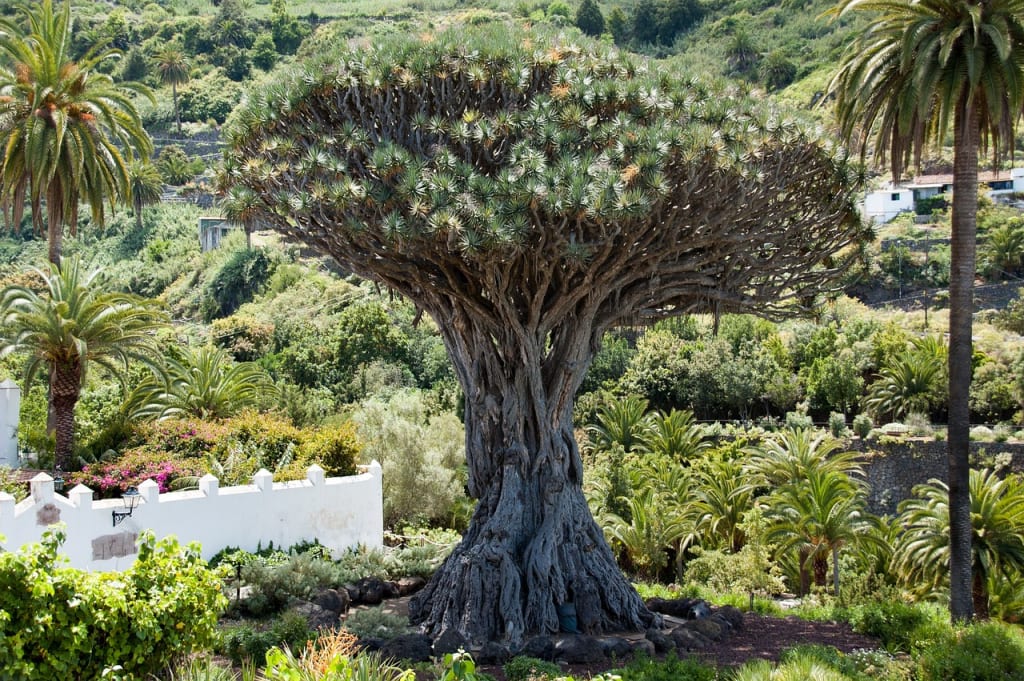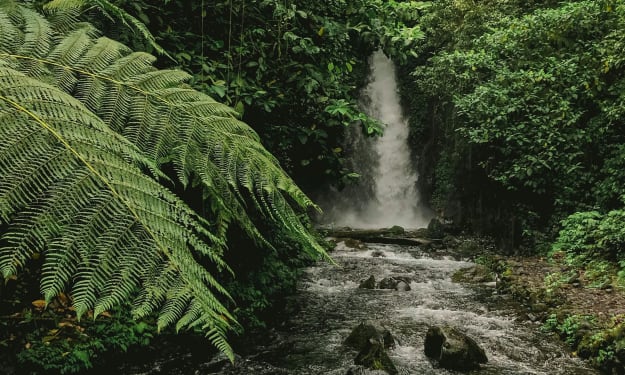
The Dragon Blood Tree, scientifically known as Dracaena cinnabari, is one of nature's most intriguing marvels. This unique and fascinating tree, native to Yemen's Socotra Island, has captivated the interest of botanists, nature enthusiasts, and travelers alike. Known locally as the Blood of Brothers Tree, it is not only a symbol of natural beauty but also a source of various benefits and cultural significance.
The Dragon Blood Tree stands out with its distinctive umbrella-shaped canopy. Its thick trunk and branches support a dense crown of stiff, sword-like leaves, making it resemble a giant mushroom or an alien plant from a science fiction movie. This unusual appearance is an adaptation to its harsh environment. Socotra Island, located in the Arabian Sea, is known for its arid conditions and rocky terrain. The tree's shape helps it survive by providing shade to its roots and reducing water loss.
One of the most remarkable features of the Dragon Blood Tree is the red resin it produces, often referred to as "dragon's blood." This resin has been valued for centuries for its various uses. In ancient times, it was used as a dye and in alchemy. The bright red color made it a prized ingredient in medieval medicine and magical rituals.
Today, dragon's blood continues to be used in traditional medicine. It is believed to have anti-inflammatory, antibacterial, and antiviral properties. Local communities use it to treat wounds, skin conditions, and respiratory ailments. In addition to its medicinal uses, the resin is also utilized in varnishes, incense, and as a natural pigment.
The Dragon Blood Tree plays a vital role in the ecosystem of Socotra Island. Its roots help prevent soil erosion in the rocky landscape, and its canopy provides shelter for various species of plants and animals. The tree is a keystone species, meaning its presence supports the survival of other species within its habitat. This interdependence highlights the importance of conserving the Dragon Blood Tree, as its decline would have far-reaching effects on the island's biodiversity.
For the people of Socotra, the Dragon Blood Tree is more than just a plant; it is a cultural icon. The tree is deeply woven into local folklore and traditions. Legends say that the tree's red resin is the blood of brothers who fought to the death, hence its name. This story symbolizes the themes of sacrifice and kinship, which are central to the island's cultural identity.
The tree also features in various rituals and ceremonies. It is considered a symbol of protection and prosperity, and its resin is used in traditional healing practices. The enduring presence of the Dragon Blood Tree in Socotra's culture underscores its importance beyond just its physical characteristics.
Despite its resilience, the Dragon Blood Tree faces numerous threats. Climate change, habitat destruction, and overharvesting of its resin pose significant risks. As Socotra's environment changes, the tree's ability to thrive is challenged. Conservationists are working to protect this unique species through various initiatives. Efforts include planting new trees, protecting existing habitats, and promoting sustainable harvesting practices.
Local and international organizations are collaborating to raise awareness about the importance of the Dragon Blood Tree. Ecotourism is also being promoted as a way to support conservation while providing economic benefits to the local community. By visiting Socotra, tourists can experience the beauty of the Dragon Blood Tree and contribute to its preservation.
The Dragon Blood Tree of Yemen's Socotra Island is a testament to nature's ingenuity and resilience. Its striking appearance, valuable resin, and ecological significance make it a tree of great interest and importance. As a cultural symbol, it connects the people of Socotra to their heritage and traditions. However, the tree's future depends on continued conservation efforts and sustainable practices. By appreciating and protecting the Dragon Blood Tree, we can ensure that this natural wonder remains a vital part of Socotra's landscape for generations to come.
In essence, the Dragon Blood Tree is not just a tree; it is a symbol of nature's artistry, a source of life-sustaining benefits, and a vital part of the cultural and ecological fabric of Socotra Island. Protecting it is not only an environmental imperative but also a tribute to the rich history and heritage it represents.
About the Creator
Amal Prince
A full-time teacher with an eye for unique things. I like to know and share interesting facts that are not under the common label.
Enjoyed the story? Support the Creator.
Subscribe for free to receive all their stories in your feed. You could also pledge your support or give them a one-off tip, letting them know you appreciate their work.






Comments
There are no comments for this story
Be the first to respond and start the conversation.